The HTC One M9 Review: Part 1
by Joshua Ho on March 22, 2015 7:00 PM EST- Posted in
- Smartphones
- HTC
- Qualcomm
- Mobile
- Snapdragon 810
- One M9
System Performance: Snapdragon 810
We've been able to test Snapdragon 810 before, but it was only in the context of Qualcomm’s developer platform tablets and phablets, which have a higher possible TDP than shipping devices, and generally doesn’t have any need for battery life as these devices usually spend all of their time plugged into a charger. Thus, the One M9 represents our first experience with a Snapdragon 810 device with shipping software and hardware. HTC noted during the review process that our devices were running non-final software, and we received an OTA update that significantly changed the thermal throttling characteristics of the device, but this seems to have only affected performance in situations where the SoC was nearing maximum acceptable skin temperatures as performance in these benchmarks were relatively unchanged.
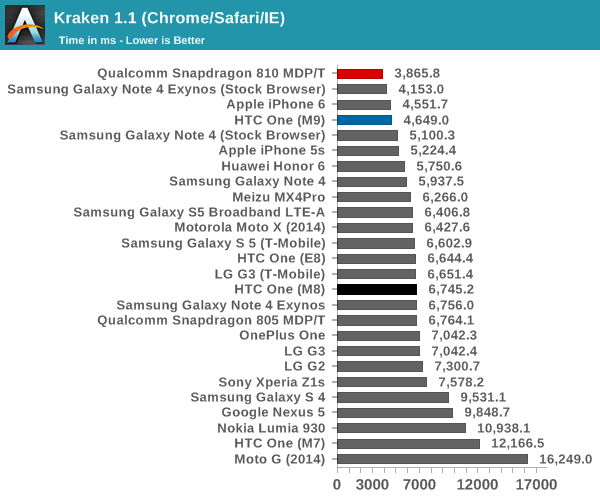
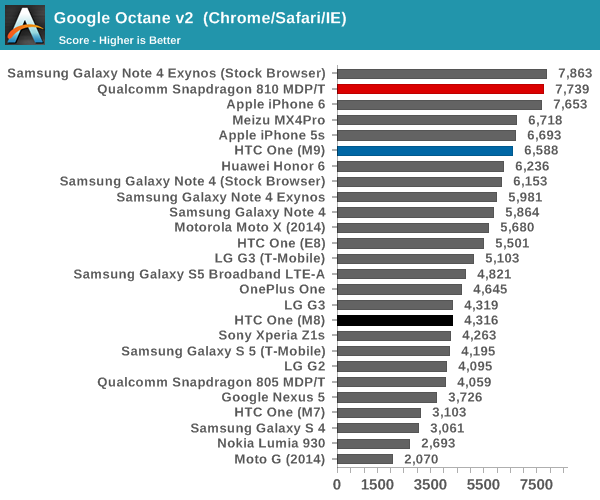

In our first few browser tests, we can see that the One M9 posts dramatically lower performance than the Snapdragon 810 MDP/T, which seems rather strange. However, using CPUBurn to try and load just a single thread reveals that without HTC’s CPU cheats, it’s basically impossible to get the A57 cluster beyond 1.5 to 1.6 GHz. It's important to emphasize that this isn't new behavior, as this was present on pre-release software as well, which means that HTC didn't do this at the last minute.
For those that are unfamiliar with how HTC's CPU cheats work, HTC continues to rely on some level of benchmark detection, and it seems that when a benchmark is detected it enables a "High Performance" mode in the developer settings with no option to disable this mode. It's possible to work around this mode by using benchmarks that evade such detection mechanisms (and we do), but it's also possible manually toggle this mode on and off if a benchmark isn't detected. This benchmark mode appears to relax throttling constraints, but more obviously it enables one to go from a maximum of 1.6 GHz to the rated 2.0 GHz of the Snapdragon 810 for extended periods of time. However, even in this mode we can see that a sustained load of a single thread on the A57 cluster will cause the cluster to throttle to 1.7 GHz in this mode, while without this mode enabled we see that a single thread will eventually cause the A57 cluster to clock around 1 to 1.2 GHz. If the normal governor does allow the SoC to reach 1.9 GHz, I can't really perceive the amount of time that it does reach such a speed.
The most concerning result is WebXPRT, which is a bursty workload that runs over a few minutes, which suggests that we’re already seeing thermal throttling in the M9.

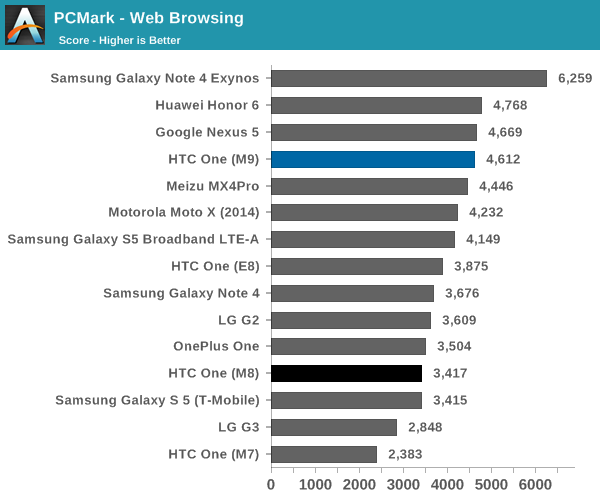
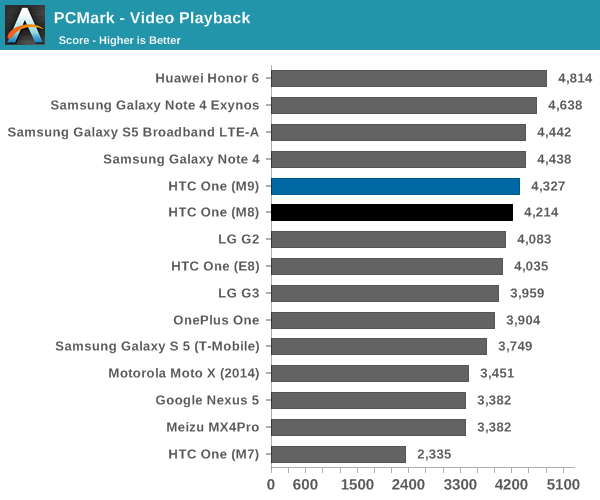
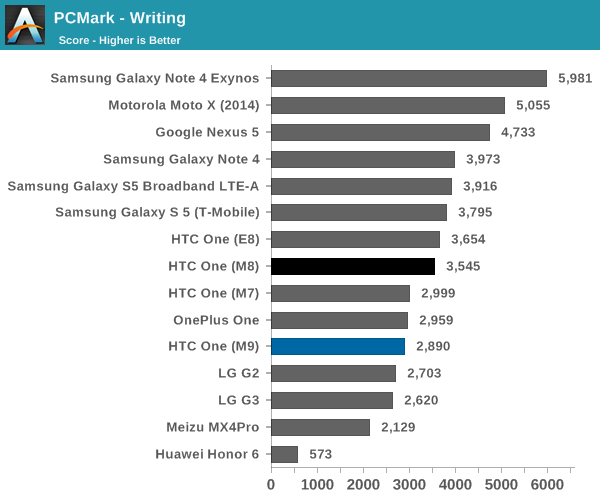
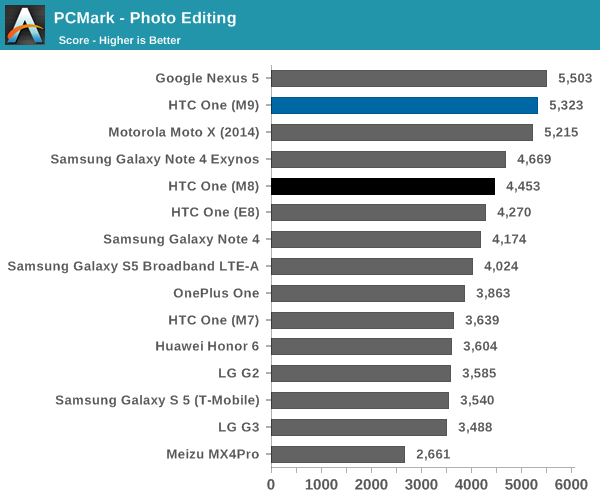
In PCMark, which is a benchmark that tends to focus strongly on race to sleep scenarios, we can see that the Snapdragon 810 appears to significantly trail behind the Exynos 5433, which is on a similar process node. It's hard to say whether this is due to the scheduler configuration or differences in the physical design of the SoC, but at any rate this is another concerning performance from the SoC of the One M9.
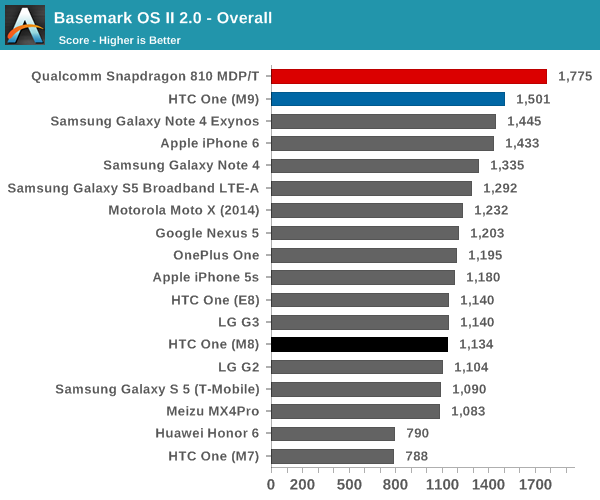

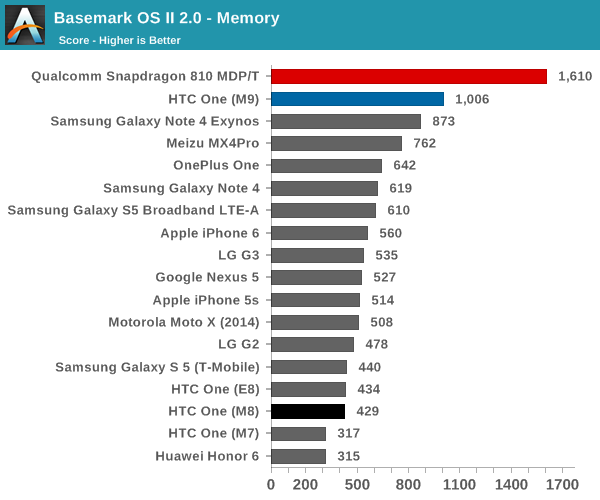
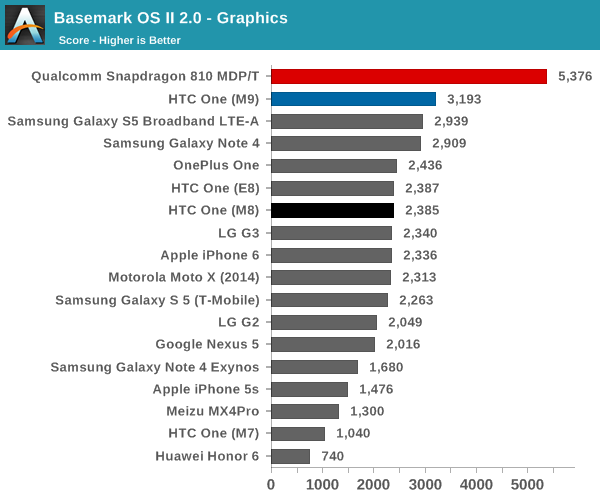
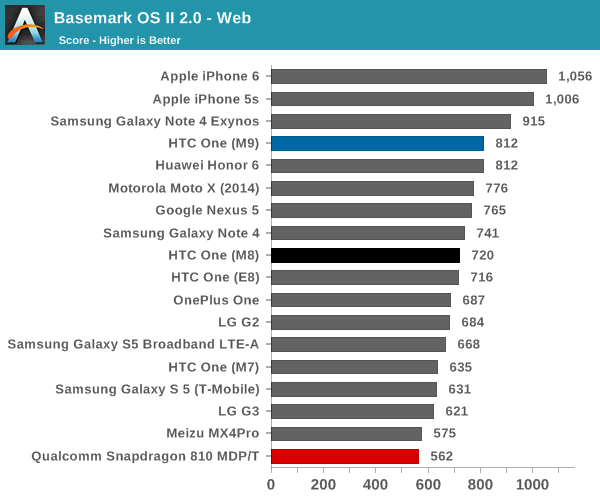
Moving on to the general system performance tests, we see that the M9 delivers a reasonable improvement in performance over the M8, but most of the difference seems to come from the GPU and storage performance rather than anything else that was tested. Overall, the Snapdragon 810 really isn’t off to the best start in any test we’ve thrown at it so far. To see if Snapdragon 810 has any redeeming features we’ll look at GPU performance next.


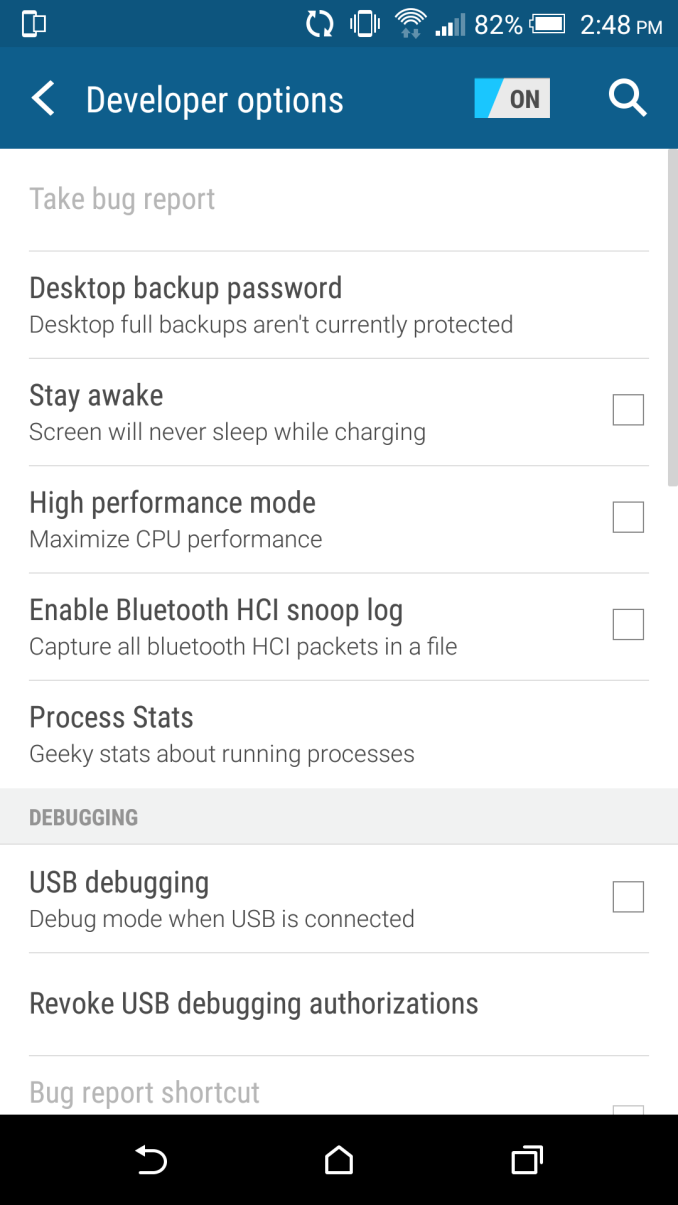








132 Comments
View All Comments
V900 - Monday, March 23, 2015 - link
Heh, that's kinda funny... iPhone owner here too, a fairly happy one at that, and the Z3Compact is also the only Android handset I find the least bit tempting!polygon_21 - Monday, March 23, 2015 - link
"The One M7 was essentially the phone that saved HTC."The M9 might be the one that kills it.
Laxaa - Monday, March 23, 2015 - link
Ouch. HTC really dropped the ball here.I was considering replacing my Lumia 920 with the M9, but at this point I'd rather wait for the M10 with the Snapdragon 820. Too bad, because HTC really had a good template with the M7(always felt that the M8 was a step back in tersm of design).
jvl - Monday, March 23, 2015 - link
"(...) but we’re basically fighting physics here."Uh really? Have you seeen... well, the Moto X? Either of those, that is?
How can you say something like that?!
jvl - Monday, March 23, 2015 - link
Before any downputting comments arise, find the quoted piece at the design section, directly under the picture showing off HTC's brand.Which I avoid for this specific reason....
jvl - Monday, March 23, 2015 - link
Wow, after skimming through the review I really wonder... Do we really need an HTC as a competitor? This device feels completely unnecessary. If they can't even get an improvement right, they're better off making room for someone who can.Sony could use more exposure, I've got the impression their lineup wipes the floor with HTC's.
Seriously, I usually compare the plots (benchmarks and whatnot) to both my current phone or my aspired-to-next-phone (currently: Moto x 14 / none) - in this case, there is not a single feature I'd like to see from the M9 in the device I have....
Plus, that logo... (Any company worth its sh*t should be proud enough and confident enough not to spoil the front like that)
sonny73n - Monday, March 23, 2015 - link
Yup, not to mention the logo is very ugly, plus the the off-centered display is a deal breaker for me.DeciusStrabo - Monday, March 23, 2015 - link
The M9 gets an hour (15 %) more runtime than the Moto X. A single feature that I would think you'd see as worthy.Laxaa - Monday, March 23, 2015 - link
Sony has some great phones(The compacts are excellent), but they are plagued by lackluster camera performance(lack of OIS and terrible processing), which is ironic considering Sony produces most of the sensors on the market today.The Z4 will be one to watch though, and I hope there will be a compact version of it.
marcolorenzo - Monday, March 23, 2015 - link
Back when the reviews first came out for the HTC One X, they certainly didn't mention the problems listed in this article's introduction. Of course, I don't remember what Anandtech had to say about it but I definitely remember several sites praised it as if it was the second coming for Android. Based on those reviews, I decided to "upgrade" to it from an iPhone 3GS. What a huge disappointment. The only good thing about it was the camera I think. Performance was pathetic and the battery life was barely tolerable. They were also terrible with software upgrades but of course, this could not have been foreseen by reviewers. It almost made me go back to Apple but I stuck around and got a Z1 Compact after my contract was up and has been very satisfied ever since.The fact that the M9 has received hardly any design changes from the M8 or M7 for that matter and suffers from performance and battery life problems show that HTC is a relic of a company and deserves to be put down. In this day and age, there's simply no room for idiocy like this, especially not when the competition is so strong and definitely not when they are already playing catch up. I'll be buying a S6 Edge next month, the M9 won't even be factoring into my consideration.